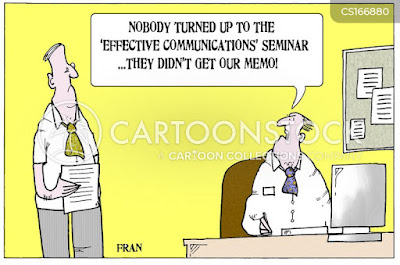Communication Plan for ISO 27001: Making them hear and repond
The Communication Plan is a key element of a good Information Security Management System(ISMS). Your organization need to communicate most accurate Information to it's stakeholders at the best moment. It's equally important in security management to make people to respond to situations in the proper way.
Effective communication includes proper content, format and time to ensure creating trust among recipents both internal and external parties. Your communication will show how prepared you are, and whether you are reactive or proactive.
ISO 27001 clause 7.4 requires your organization to have a clear communication plan.
It should include :
- Who should communicate?
- To whom?
- What messages?
- On what?
- When?
- How?
On what? means the content that will convey your message. It should clearly communicate what is important to the organisation and what's relevant to the recipient.
The content should match the interest of the recipient.
The content need to conform to the organization requirements and policies.
It may address risk management issue, a change in a control, procedure or policy, a vulnerability, events or incidents.
The purpose could be to create awareness or to perform a planned reaction.
The communication plan need include requirements for security in agreements made with services and product providers.
What messages?
The form & format of the messages should be clear to produce the expected behavior. The type of the communication medium can be short messages, news, circulars, stories, images, metaphors, or even cartoons can help.
Messages should be complete, short and focused on their real purpose and intent.
Who?
The communication plan should define who is authorized to communicate, with whome at what circumstances.
Top management, CISO, PR officer, legal officer, HRM may communicate with different parties on different security matters.
The person communicating must have the appropriate authority to communicate. He or she should ensue that message will receive attention, and followed by the expected response.
To whom?
All security communications are not intended for everyone. A Message is intended for a specific audience. The recipient should have clearance to information, necessary knowledge, and role in organization.
The communication plan should clearly design who should receive information based on a classification such as confidential, private, internal, public.
How?
The communication plan should define the process of communication. How the message is prepared, approved, specially in the case of incidents and crises.
Defined channels and protocols should be included in communication plan to to ensure that information reaches the intended audience at the best moment. Examples are SMS, Emails, pop-ups, screensavers, posters, audio messages, meetings, policies and directives, etc.
When?
The communications can be continuous as well as event-based. It may require retransmitting for new staff. Some messages require reminders.
The Communication Plan must have both internal and external aspects, for them to respond differently .
Internal Communication Plan
The Information Security Policy, Established key roles and responsibilities, Awareness plan, the general and specific requirements to respond to incidents.
External Communication Plan.
Regulatory authorities, public authorities, shareholders, clients and partners, to announce events either positive or negative incidents, accidents and crises.
Be careful not to expose confidential information when you disseminate information that might make a situation worse.
The Communication Plan is important to create and maintain trust and confidence with your stakeholders on your preparedness, capability to face events, and ability to recover from crises.




Comments
Post a Comment